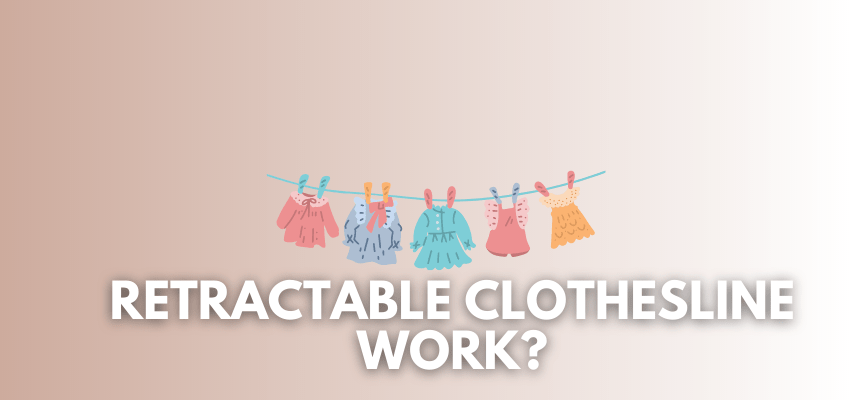Table of Contents
Last Updated on: 29th July 2023, 06:58 am
If you’re curious how retractable clotheslines work, then consider them clotheslines with a lot simpler installation process and usage. Unlike traditional fixed clotheslines, retractable ones come with a reel and a line that can be extended and retracted as needed.
Retractable clotheslines offer a convenient and space-saving solution for drying laundry.
This mechanism allows users to utilize the clothesline when required and retract it when not in use, keeping the area tidy and maximizing space efficiency.
Allow me to delve into the working of retractable clotheslines and explore the mechanism behind their functionality.
Retractable Clothesline: How it Works
Let’s take a look at the important steps.
Gather all the Components of a Retractable Clothesline
Components of a Retractable Clothesline A retractable clothesline typically consists of three main components:
1. Retractable Reel
The heart of the clothesline, the retractable reel, is a housing unit that stores the clothesline line when not in use. The reel is designed to keep the line neatly wound and protected from external elements.
2. Nylon or Wire Line
The line itself is usually made of nylon or wire, providing a sturdy and durable surface to hang clothes. The length of the line can vary, offering flexibility to extend and retract according to the user’s requirements.
3. Wall Brackets
These brackets are mounted on a wall or surface, providing support and stability for the retractable reel. They also serve as the anchor points for the clothesline when extended.
Extending the Clothesline
When you need to hang your laundry, simply pull the end of the clothesline away from the retractable reel. The line is designed to slide smoothly out of the reel, allowing you to extend it to the desired length.
Some retractable clotheslines have an automatic lock or a line lock feature that holds the line securely in place once it reaches the desired length.
Locking the Line
Once you’ve extended the clothesline to the required length, you can lock it in place to prevent accidental retraction or sagging. Depending on the clothesline model, this locking mechanism can be manual or automatic.
Manual locks involve securing the line with a hook or clip, while automatic locks engage when the line is extended to a specific point.
Retracting the Clothesline
After your laundry is dry and you no longer need the clothesline, retracting it is as simple as unlocking the line and allowing it to be smoothly pulled back into the retractable reel. The automatic locking feature disengages as you retract the line, ensuring a seamless and hassle-free process.
Tension Control
Retractable clotheslines often come with a tension control feature, which enables users to adjust the tension of the line. By controlling the tension, you can ensure that the line remains taut when hanging clothes, preventing sagging and enhancing drying efficiency.
Proper tension control also extends the life of the clothesline by minimizing wear and tear.
Versatility and Portability
One of the key advantages of retractable clotheslines is their versatility and portability. You can install them indoors or outdoors, and since they are retractable, they can be conveniently hidden away when not in use.
Some models even come with a rotating feature, allowing you to adjust the angle of the line for optimal sun exposure.
Conclusion: How Retractable Clotheslines Work
Retractable clotheslines operate on a simple yet effective mechanism that offers users the flexibility to extend and retract the line as needed.
With components like the retractable reel, line, and wall brackets, these clotheslines provide a space-saving and organized solution for drying laundry.
The ability to control tension, lock the line, and enjoy the versatility of indoor and outdoor use makes retractable clotheslines a popular choice for households worldwide.

